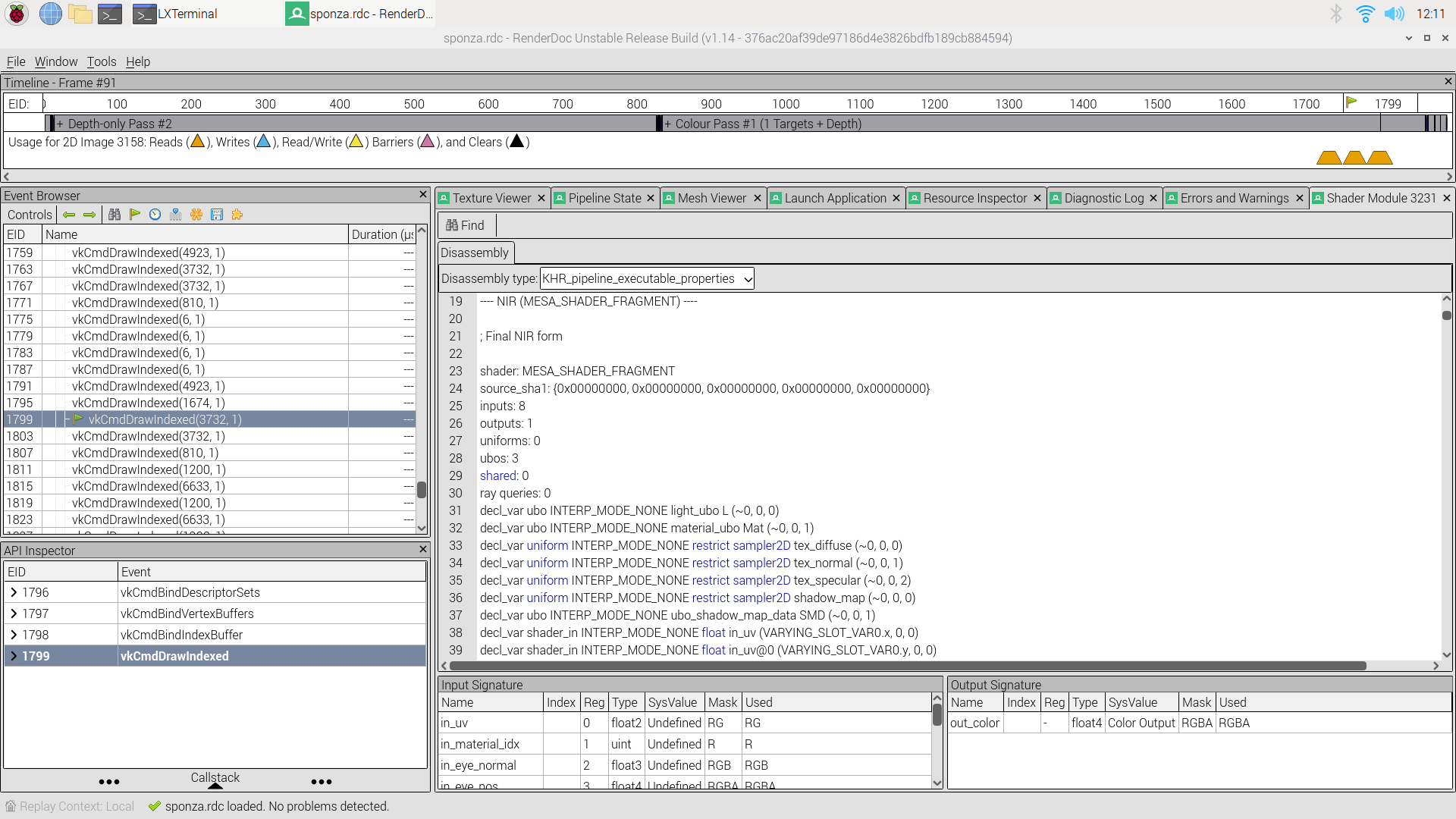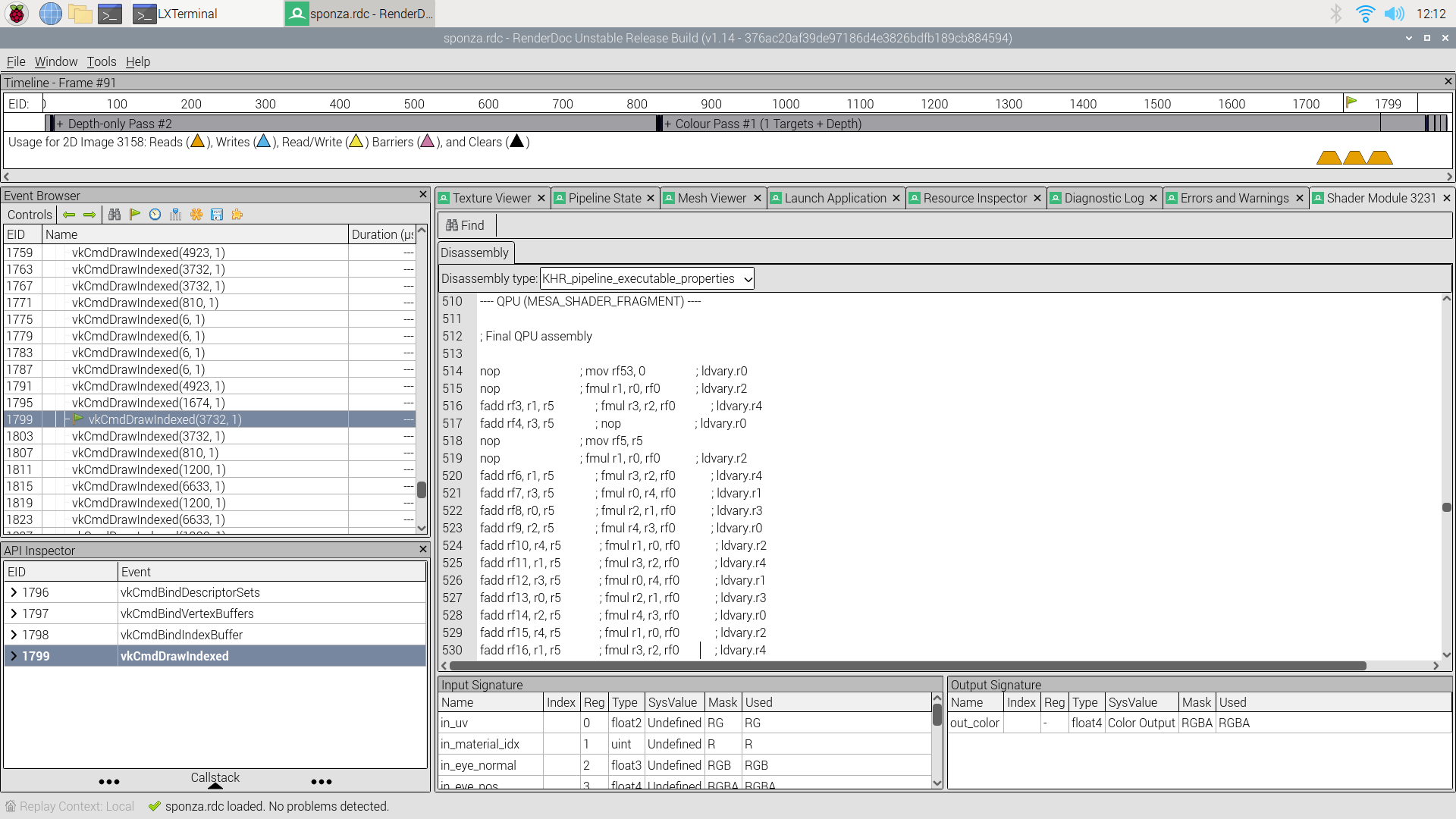Lately I have been exposing a bit more functionality in V3DV and was wondering how far we are from Vulkan 1.2. Turns out that a lot of the new Vulkan 1.2 features are actually optional and what we have right now (missing a few trivial patches to expose a few things) seems to be sufficient for a minimal implementation.
We actually did a test run with CTS enabling Vulkan 1.2 to verify this and it went surprisingly well, with just a few test failures that I am currently looking into, so I think we should be able to submit conformance soon.
For those who may be interested, here is a list of what we are not supporting (all of these are optional features in Vulkan 1.2):
VK_EXT_descriptor_indexing
I think we should be able to support this in the future.
VK_KHR_shader_float16_int8
This we can support in theory, since the hardware has support for half-float, however, the way this is designed in hardware comes with significant caveats that I think would make it really difficult to take advantage of it in practice. It would also require significant work, so it is not something we are planning at present.
VK_KHR_buffer_device_address
We can’t implement this without hacks because the Vulkan spec explicitly defined these addresses to be 64-bit values and the V3D GPU only deals with 32-bit addresses and is not capable of doing any kind of native 64-bit operation. At first I thought we could just lower these to 32-bit (since we know they will be 32-bit), but because the spec makes these explicit 64-bit values, it allows shaders to cast a device address from/to uvec2, which generates 64-bit bitcast instructions and those require both the destination and source to be 64-bit values.
VK_EXT_sampler_filter_minmax
VK_KHR_draw_indirect_count
VK_EXT_scalar_block_layout
VK_EXT_shader_viewport_index_layer
VK_KHR_shader_atomic_int64
These lack required hardware support, so we don’t expect to implement them.


